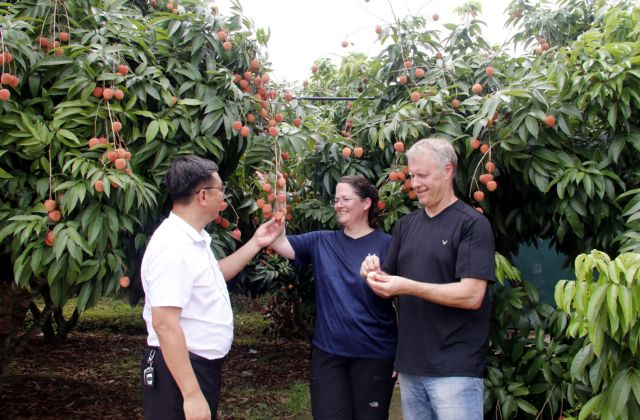 Sunday/Weekend
Sunday/Weekend

By Hà Hương
Dogs as pets, sure. Cats, absolutely. Birds and rabbits, of course. But crabs? Really?
It turns out that one man in Hà Nội is so crazy for crabs he has dozens upon dozens of them as pets. Hà Xuân Lộc even breeds them for a living and claims people are snapping up these cute crustaceans like there’s no tomorrow.
“The hobby of keeping crabs was very popular many years ago, especially in Thailand and China,” Lộc told Việt Nam News. “In the past few years, it has spread to young people here in Việt Nam.”
The 34-year-old animal lover was first attracted to crabs six years ago on a trip to Thailand. He fell so deeply in love with the creatures that he decided to bring some home to live with him.
Lộc did his homework assiduously and learned that there were many beautiful species of crabs in Việt Nam and Indochina, particularly in mountainous areas.
This was Lộc’s lightbulb moment, and he decided to shell out and go into businesses breeding them.
The pet-shop owner sought expert advice and set up a farm raising crabs and tropical fish in the northern province of Sơn La. But as with all tough tasks, the breeding process was no easy feat, and he found out that different species of crabs had many different characteristics and idiosyncrasies.
Weather plays a huge part in the lives of crabs, so he has to ensure the temperature is appropriate in tanks at his farm.
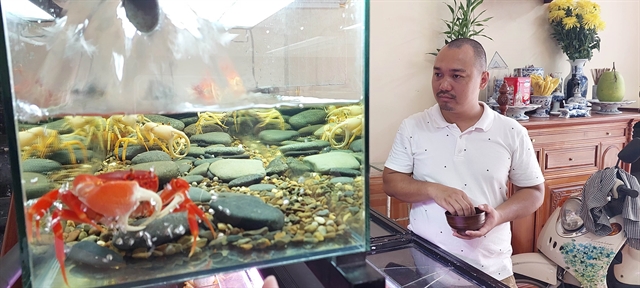 |
| Hà Xuân Lộc understands the characteristics of each crab. VNS Photo Paul Kennedy |
He mostly breeds cua càng cong (Hainanpotamon rubrum), crabs with curved claws; and cua chân dài (Tiwaripotamon vietnamicum), crabs with long legs. The latter is more difficult to breed in a man-made environment.
“At the beginning, each time I put crabs in the tanks, they fought against one another. The number of new babies was not as many as the adult crabs that died in the process," he said.
“It was very disappointing. In 2018, we even thought about opening a crab noodle shop because I struggled to sell the crabs as pets, particularly to foreigners.”
But Lộc stuck with it and was determined to make a go of his crab-breeding business. He decided to go back to Thailand to study the process more.
“The weather in Việt Nam is suitable for raising wild crabs like in Thailand,” he said. “But it is far from simple to make them breed well and give birth to babies on a mass scale.”
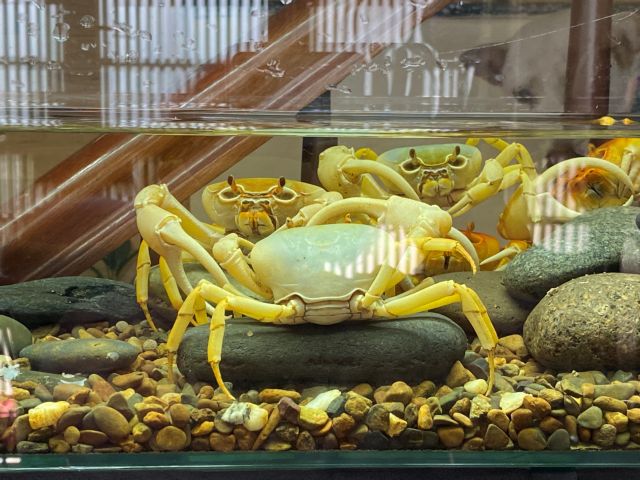 |
| All crabs that Hà Xuân Lộc breeds now are of Vietnamese origin. VNS Photo Lê Hương |
Lộc said that crabs could live for more than 10 years and be raised in a plastic box or a glass tank with a water level of 50-60 per cent and plenty of oxygen.
He even learned to make his own food for the crabs, from shrimp and fish powder.
The crabs come in various colours. When eating, the crabs also eat local soil, which gives them their own colours like red, yellow, orange, green, blue, and white. The grey ones have red eyes.
Lộc raises thousands of crabs on his farm, including hundreds of couples specifically to mate. The crustaceans are kept in indoor boxes placed on top of one another.
Most of the crabs reside in semi-water conditions. But when they are domesticated, they can be raised in deep water tanks with fish.
A crab will change its shell once every 3-4 months in good conditions. But the more it grows, the less often it changes the shell. When it reaches one year old, it only changes the shell once a year. A crab gives birth at eight months, and each year, it gives birth to multiple crab babies (zoea) at once.
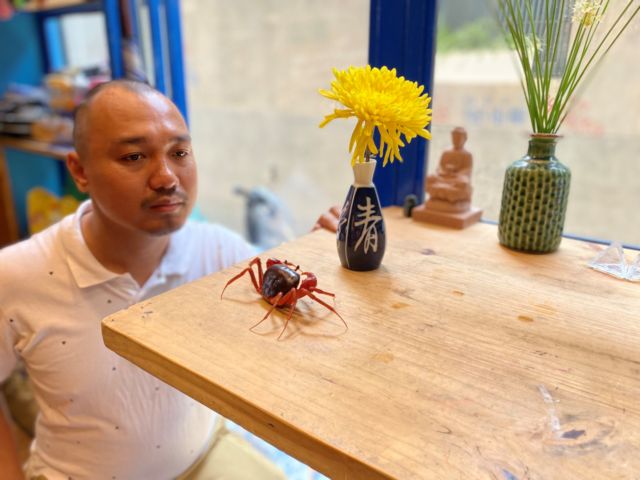 |
| Hà Xuân Lộc has spent lots of time researching crabs. VNS Photo Lê Hương |
The price of each crab depends on its size (from 3-7cm, and average 120 grams in weight), which ranges from VNĐ100,000 to 350,000 (US$4-15).
At first, Lộc targeted foreign markets like Hong Kong, Thailand and China. But in the past two years, he has seen more and more buyers in Việt Nam and supplies from pet shops and collectors.
Each month, he sells up to 1,000 crabs throughout the country and can earn around VNĐ100 million.
“There are now hundreds of crab species in the world, many of which can be kept together with fish,” he said. “I think these kinds of crabs can be kept as pets for a long time. Some crabs should be kept alone, and some rare ones need special conditions to be raised.”
His crabs survive well in man-made conditions without being attacked by worms or parasites that harm the fish in the same tank.
In the cross-breeding process, Lộc said he finds inspiration when he suddenly creates some breeds with new colours from those with popular basic colours.
“I am satisfied with these cross-breeding results,” he said. “Crabs with rare colours include brown, green with yellow legs, purple and pink colours or white body with red eyes.”
Lộc has concentrated on local breeds as he has not been able to check if the imported ones are dangerous to the local environment.
“I am passionate about these breeds of crabs because they are of Vietnamese origin,” he said. “I also want to keep various kinds of local fish as pets, but I want to share these original Vietnamese pets with other people around the world.”
Lộc also has a shop in Kuala Lumpur and will open one in Bangkok next month.
Crab lovers
Lê Thanh Tuyền, 24, from Cần Thơ, ordered six crabs of various colours from Lộc’s shop in June after she saw them on a TikTok clip by Lộc.
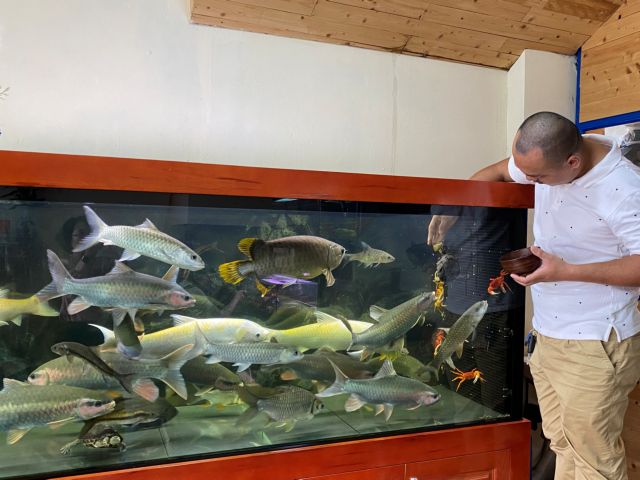 |
| Hà Xuân Lộc keeps the crabs with fish. VNS Photo Lê Hương |
“I like the colours, so I try to raise them in a one-metre-long fish tank,” she said.
The crabs were transported from HCM City to Cần Thơ and have stayed healthy ever since.
“They seem to grow well,” she said. “They eat various kinds of food from fresh shrimp to dry food for fish.”
Tuyền found the crabs are much easier to raise than fish. She has even ordered some more for her friends as they visited her home and liked them.
Trần Chí Dũng from Lào Cai Province bought six crabs in February, and he intends to buy more.
“Raising crabs is quite simple,” he said. “They live well with the fish. My tank looks more colourful now. I think anyone can keep them as pets.” VNS




